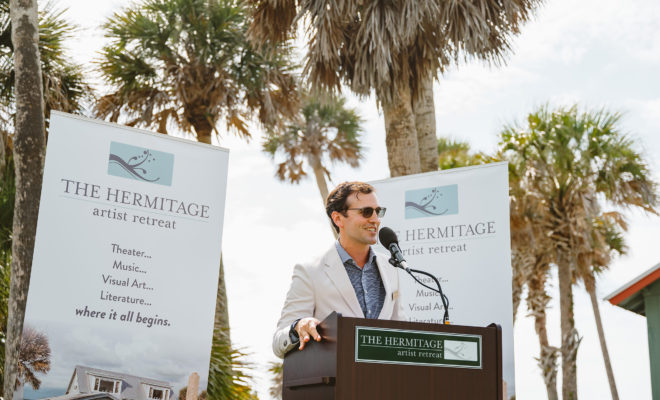
Arts & Culture
Spotlight | Creative Invitation: Artists Blossom at The Hermitage on Manasota Key
By Wendy Lyons Sunshine
Earlier this summer, 80 creative artists around the country received a package in the mail. Inside were a handful of sharks’ teeth, a small conch shell, and an invitation.
Getting this package was akin to winning the lottery. Just as each shell and fossil had been chosen from a wide universe of seaside treasures, those who received them were chosen from a wide sea of artistic talent, explains Andy Sandberg, artistic director and chief executive officer at the Hermitage Artist Retreat.
The lucky recipients are gifted with a rare opportunity—a fully paid artists’ residency at the Hermitage’s historic Manasota Key campus in Englewood, a time to relax away from daily responsibilities, recharge creative batteries, and advance their craft in a beautiful coastal setting.

Unique Opportunity
“Nothing could have prepared me for the beauty of that first visit to the grounds,” says flutist and composer Claire Chase. “I was completely blown away by the setting, by the ethos of the organization, and by the wonderful warmth of everyone I met. There’s truly no place like it in the world.
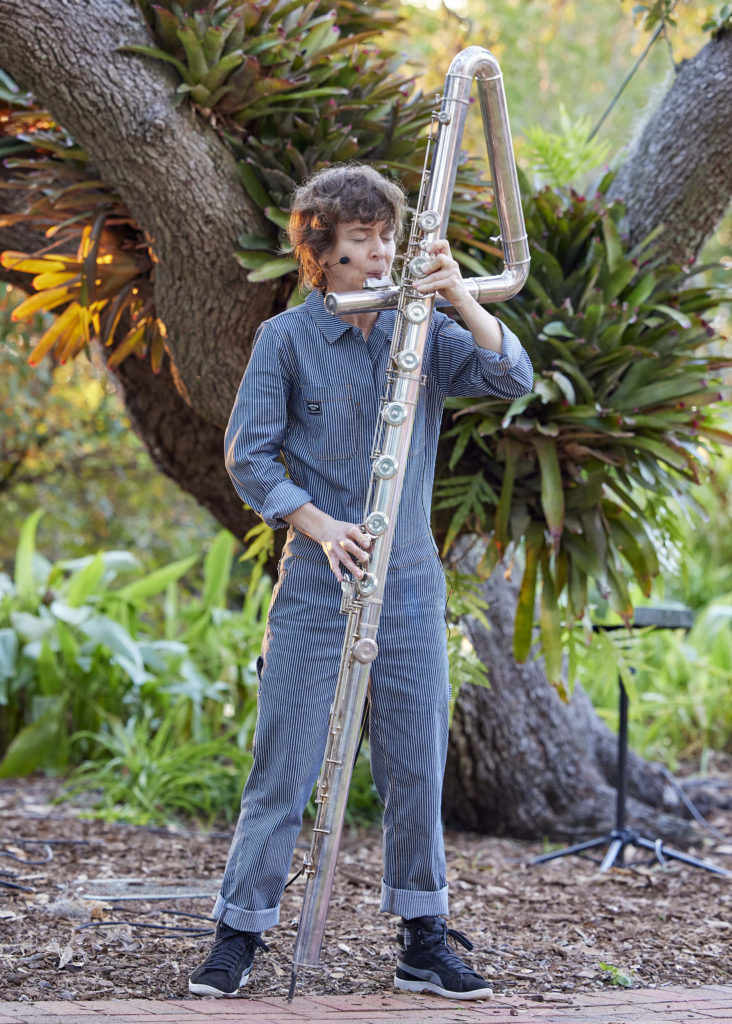
“In each of my visits to the Hermitage over the last nine years, I have made wonderful new friendships with artists, seeded collaborations that will fuel me creatively for years, and felt a sense of kinship and community that I haven’t experienced in any other place.”
Like all artists invited to the Hermitage, Chase has presented her works to the public at free events on campus and in settings across the community. During a recent visit, she presented a one-woman concert at Selby Gardens, part of the new “Hermitage Sunsets @ Selby Gardens” series. Her backdrop was a wide banyan tree and a chorale of seabirds.
Chase introduced the audience to a relatively rare instrument: the contrabass flute, which is two octaves below the standard flute and produces deep, resonant tones reminiscent of the didgeridoo, an Australian wind instrument. Her own contrabass, dubbed “Big Bertha,” delivers distinctive percussive sounds in Chase’s compositions. The musician also treated the gathering to virtuosa flute work in her composition called “Pan.” The piece features aural layers recorded earlier by volunteers playing unusual resources, such as a wine glass chorus.
The New York Times describes Chase’s work “genre-defying.” For her, creating and performing new music is akin to a high-wire act, and “that’s why I love it so much,” she says.
Art in Many Forms
The Hermitage’s overarching mission is to support the creative process and early development of artistic works spanning a wide variety of mediums. “Year round, we host artists from across theater, music, visual art, literature, and various other art forms,” says Sandberg. “They receive the gift of residencies, space and time to create bold, new, impactful work in their genres and mediums. Artists from different fields intermingle and coexist here. They come for multiple weeks at a time, flexible around their schedule.”
The Sarasota community and surrounding areas benefit from this influx of talent. Free talks, readings, and demonstrations are given, frequently at sunset on Friday evenings, at the Hermitage campus and at other venues elsewhere across the community, including at public schools and performing arts centers. Over the past year, visiting Hermitage artists presented over 50 live events across the region plus dozens of digital events accessible remotely.
There is no application form for a Hermitage residency; artists are selected and invited through a deliberate curation process. Members of the Hermitage Curatorial Council propose and discuss candidates who they believe would benefit most—typically established, mid-career artists with a deep commitment to craft, inclusivity, and innovation. Endorsement from all curators within an artistic discipline is required to seal the decision.
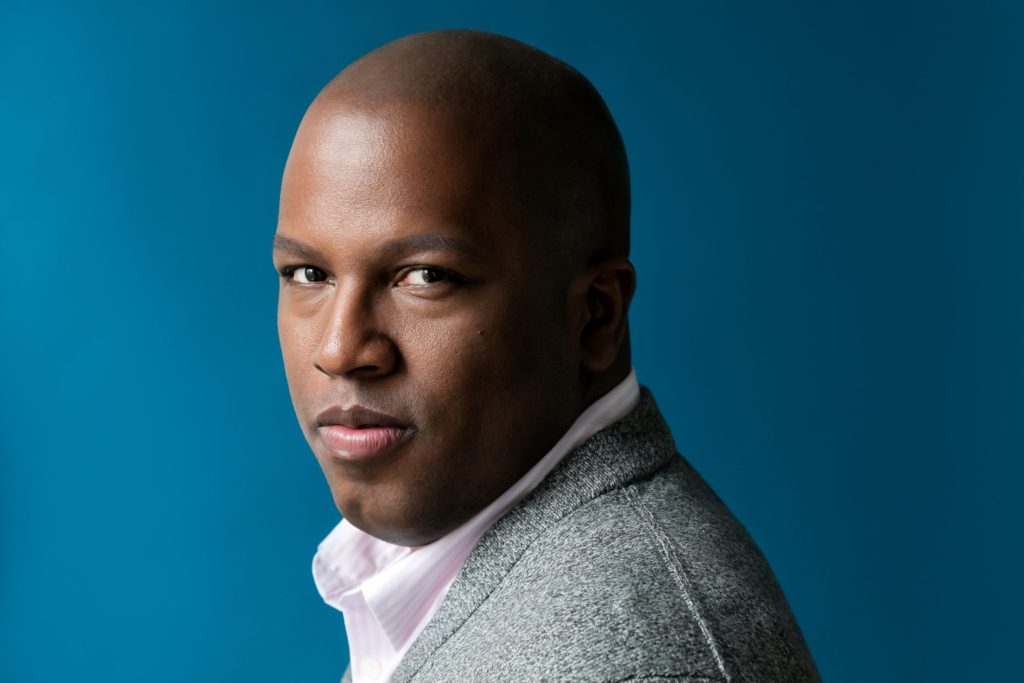
Invited artists have a history of being recognized in the highest quarters. For example, a full thirteen Hermitage artists have been awarded a Pulitzer Prize. In residence this past year was Michael R. Jackson, winner of the 2020 Pulitzer Prize in drama for his musical, “A Strange Loop.” At the Hermitage, he shared songs from his new musical “White Girl in Danger,” plus stories about his journey and process in creating the piece. From there, he left to workshop the show at New York Stage and Film, a noted theatrical incubator.
Rewarding Partnerships
With certain Hermitage residencies come a financial reward, thanks to the generosity of Hermitage supporters. One example is the Hermitage Greenfield Prize, which awards a $30,000 commission funded by the Greenfield Foundation for a significant new artistic work exploring important cultural issues, such as social justice. Now entering its 14th season, the Hermitage Greenfield Prize rotates between works in music, theater, and visual art.
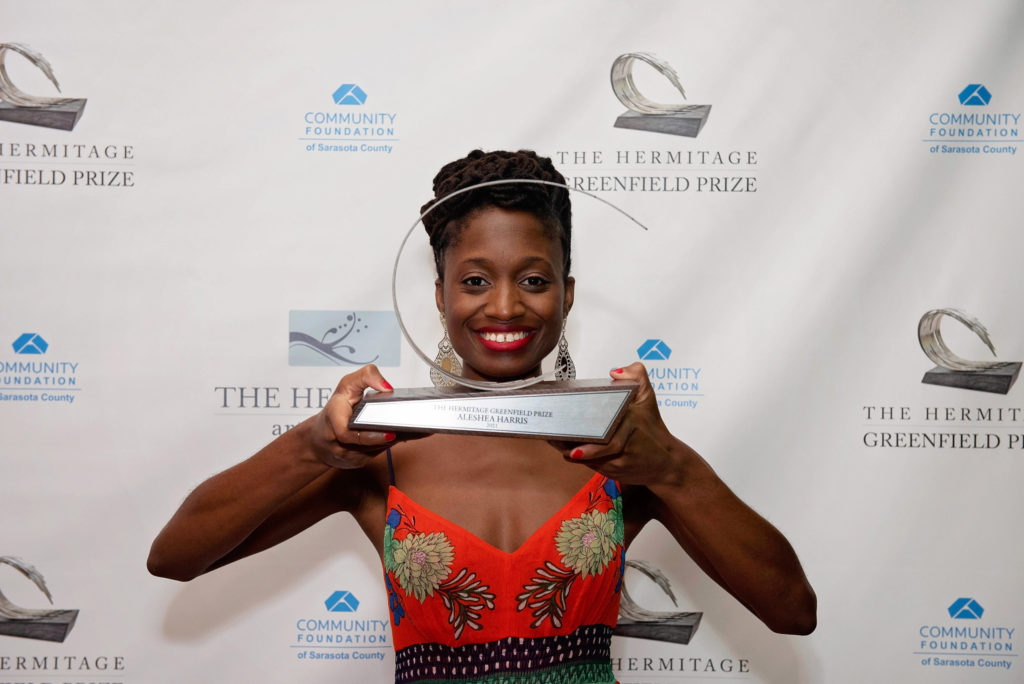
This past June, the Hermitage announced its latest initiative. Local philanthropist Flora Major and the Kutya Major Foundation are underwriting a $35,000 annual commission that will go to a playwright or theater artist for an original new work of theater. The new Hermitage Major Theater Award also comes with the opportunity to hold a reading or workshop in a major cultural center such as New York, London, Chicago, or Los Angeles.
At any given time, five or six artists are in residence on the Hermitage’s 9-acre campus. Each gets their own housing and workspace with kitchen and laundry facilities, access to a flexible, white-walled studio for staging theatrical or visual works, and a glorious natural setting.

When it’s time for a break, residents can wander by sand dunes or Native American shell middens that line the path into mangrove thickets. One leafy walk takes visitors to a wooden dock that juts out over quiet bay waters. Kayakers and paddleboarders may be rewarded with dolphin and manatee sightings.
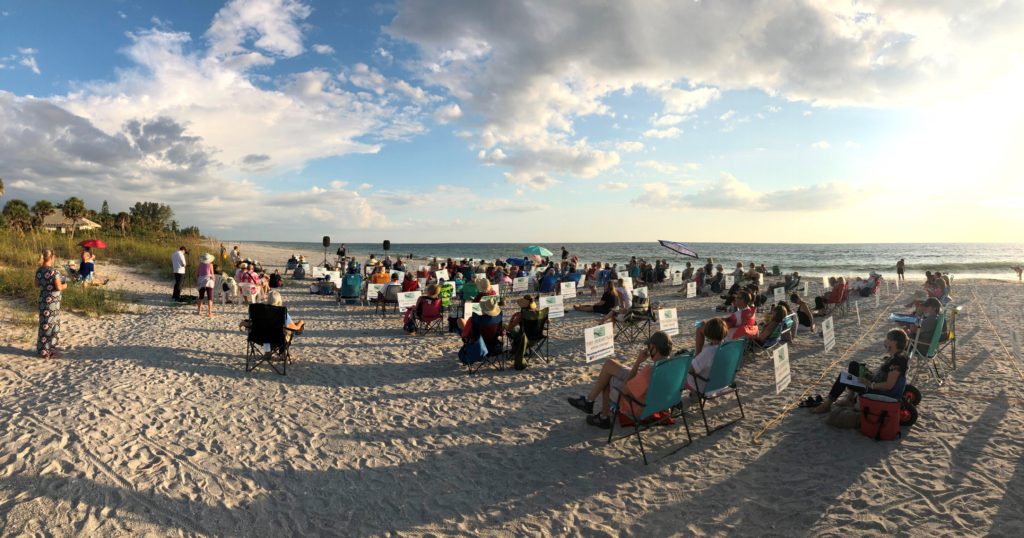
“Parts of the campus are a wetland preserve,” explains Sandberg. “When it rains and floods, we have all kinds of migratory birds, too.” Campus renovations and ecological landscaping restoration continue to make improvements. “We have plans for a nature bridge that will protect the wetlands and really make sure we’re taking care of the environment,” he says.
Christopher Burney, a member of the Hermitage Curatorial Council, former artistic producer at New York’s Second Stage Theater, and currently artistic director of New York Stage and Film, confirms how rare and special this environment is for artists. “After having spent a week in residence myself, I learned how the Hermitage sparks an authentic creative magic,” he says. “The campus on Manasota Key fosters the space to dream in ways the rest of the world rarely allows. The lush surrounding nature, the opportunity to connect with other artists, and an enthusiastic audience at the weekly presentations is the perfect alchemy in which to create.”



You must be logged in to post a comment Login